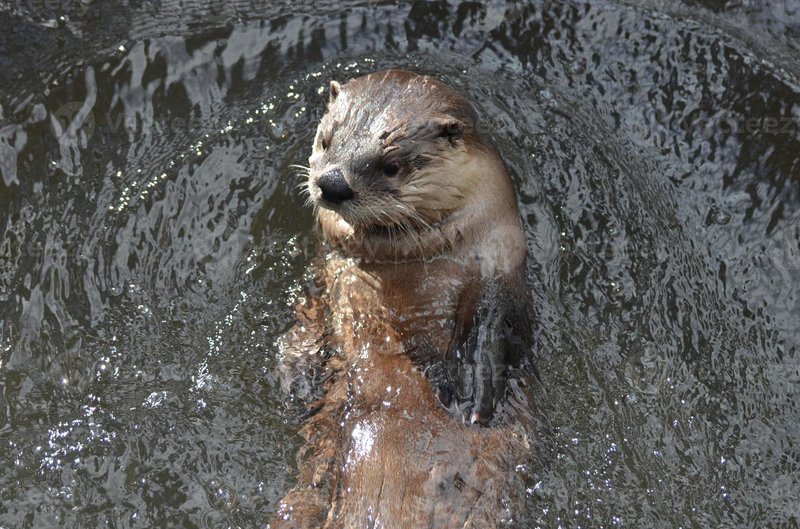
River otters are social animals, often found in groups, and they can be quite playful. Honestly, they’re fascinating to watch, but it’s important to know how to behave around them to ensure both your safety and theirs. Let me explain what to keep in mind during this encounter, so you can appreciate the sight without putting yourself or the otter at risk.
Understanding River Otters
River otters are part of the weasel family, and they thrive in freshwater environments like rivers, lakes, and wetlands. They have thick, water-repellent fur that keeps them warm, even in chilly waters. Typically, these playful creatures weigh between 50 to 100 pounds and can reach lengths of up to four feet.
You might be wondering why they seem so vibrant and energetic. River otters are incredibly social and usually live in family groups. They’re known for their playful antics, like sliding down mud or snow banks, playing tag, or tossing around stones. Seeing them in action is a reminder of the joy nature brings.
However, despite their playful nature, it’s essential to recognize that river otters are still wild animals. They can become defensive if they feel threatened, especially if they perceive you as a danger to their young. Understanding their behavior is the first step in knowing how to respond.
Stay Calm and Observe
If you spot a river otter in the wild, the first thing to do is stay calm. It’s natural to feel excited, but panicking can lead to hasty decisions. Take a moment to observe the otter from a distance. This way, you get to enjoy watching it without intruding on its space.
Here’s the thing: otters are naturally curious. If they see you, they may approach to investigate, but they’ll usually keep a safe distance. Observe their behavior. Are they playing? Grooming? Eating? Remember, this is their habitat, and you’re just a visitor.
Make sure to keep your voice low. Loud noises can scare them away. If you’re with children or pets, it’s a good idea to keep them quiet and calm as well. This helps maintain a peaceful environment for both you and the otter.
Keep Your Distance
While it’s tempting to get closer for a better view or even a picture, it’s crucial to maintain your distance. River otters can be territorial, especially around their families. Approaching them too closely can stress them out and might prompt defensive behavior.
A good rule of thumb is to stay at least 50 yards away. This distance helps ensure that you’re not perceived as a threat. You might enjoy spending a few moments watching them from afar, where you can still appreciate their playful nature without encroaching on their space.
If the otter seems agitated, retreat slowly. Don’t turn your back on them abruptly; this could trigger a chase instinct. Instead, back away calmly and give them room to roam.
Avoid Feeding the Otters
You might think it’s a nice gesture to throw some food to the otters, but feeding them is a big no-no. Wild animals, including river otters, should find their own food. When you feed them, it disrupts their natural hunting habits and can lead to dependency on humans for food.
Additionally, feeding otters can create conflicts with humans. An otter that feels comfortable approaching people for food might become a nuisance, and in some cases, it can lead to dangerous encounters.
If you want to help otters, focus on preserving their natural habitat. Participate in local conservation efforts, and respect their space in the wild. This way, you contribute to their survival without interfering with their natural behaviors.
Know When to Leave the Area
At times, the best option is to quietly leave the area. If the otter seems agitated or is making noise, like chirps or growls, give it space. Animals express discomfort in various ways, and you should respect their signals.
If you notice the otter acting aggressively or showing signs of stress, it’s a clear indication that you’ve overstayed your welcome. Retreating will not only help you avoid a potentially dangerous situation, but it also allows the otter to feel secure in its environment again.
When you leave, do so quietly and without sudden movements. This helps maintain a peaceful transition and minimizes stress for the otter.
Reporting Distressed Otters
In some cases, you might encounter an otter that appears sick, injured, or orphaned. If you see an otter that seems unable to move or is behaving unusually, it’s essential to report it to local wildlife authorities or animal control. They have the expertise to handle the situation safely.
Never attempt to rescue a wild otter on your own. Even if it looks helpless, approaching it can lead to injury for both you and the otter. Plus, handling wildlife without proper training can be illegal in some places.
When reporting the situation, provide as much detail as possible. Include the location, the condition of the otter, and any other relevant information. This will help wildlife officials assess the situation effectively.
Final Thoughts
Spotting a river otter in the wild is a wonderful experience that connects you to nature’s beauty. By knowing how to react in these situations, you ensure a positive encounter for both you and the otter.
To recap, stay calm, observe at a distance, avoid feeding them, and respect their space. If you come across a distressed otter, report it to the authorities instead of trying to intervene yourself.
Ultimately, appreciating wildlife is about understanding and respecting their natural behavior. When you apply these guidelines, you can enjoy your outdoor adventures safely while maintaining the harmony of our fantastic ecosystems. Enjoy your next river outing, and keep an eye out for those playful little otters!

